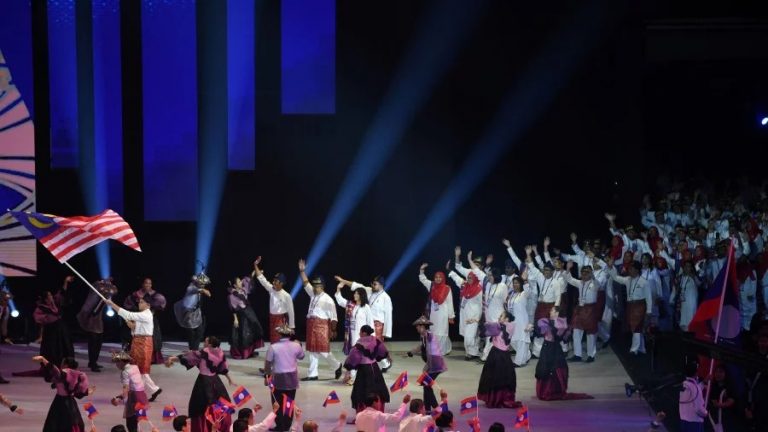The age of technology has brought forth both new things and new ways of doing things. One such innovation is the emergence of e-sports and with it the idea of e-sports branding.
E-sports is still a considerably new industry compared to its traditional sports counterpart, but in recent years the world of e-sports has shown incredible potential. Much like traditional sports, it’s a world of competitive games, which draws in huge audiences that consequently present companies with huge opportunities for branding and audience engagement. However, unlike traditional sports, the virtual platform of gaming belongs to a flourishing technological culture which presents a new realm of opportunities when it comes to e-sports branding.
What is E-Sports?
Electronic sports, or more commonly known as e-sports is a form of competition through video games. It is a non-traditional model of sport that has established itself as a commercialised entertainment enterprise over the years. Rapid developments for in-home gaming technology and platforms and enhanced game software has turned casual gamers into professional competitors. Competitive gamers form leagues or teams to challenge other players of the same game. E-sports involves competitions from a wide variety of video games. To name a few, popular e-sports such as League of Legends, Call of Duty, Overwatch, and Counter Strike gather the attention of a million viewers all over the world.
Who is Involved in E-Sports?
E-sports is a lucrative market with a revenue of $906 million in 2018 and an estimate of $1 billion in 2019 worldwide. Interestingly, not only brands and video game producers make big money from the e-sports market but professional players as well. Competitions offer winning teams with generous cheques, with some top players like N0tail, or fellow Malaysian, xNova reportedly earn as much as seven figures USD a year playing one of the biggest games in e-sports called DOTA 2. Players also receive sponsorship, endorsements, and league salaries.
Furthermore organizers also benefit from the ticket, merchandise sales and e-sports branding from these tournaments. League of Legends for example, earned $5.5 million from their ticket sales in 2017. The League of Legends World Championship gathered over 80 million spectators, earning its title as one of the most popular e-sports competition to date.
While endemic brands such as companies that manufacture gaming equipment are key players in the industry, non-endemic brands also form a key part of the e-sports ecosystem, with their participation in the industry bringing a host of benefits for both the non-endemic brands and mainstay e-sports participants like players and organizers.
How Non-Endemic Brands Enter the E-Sports Market
Red Bull, a renowned energy drink maker is a brand that has managed to keep itself in the top charts over the years and remained relevant to consumers globally to this date. Red Bull was one of the early adopters of e-sports having recognised its potential in 2008. Red Bull hosted various e-sports events, sponsored e-sports players, partnered with es-ports clubs, and produced e-sports videos. Their efforts not only contributed to the growth of the industry but they also became an inherent part of the market.
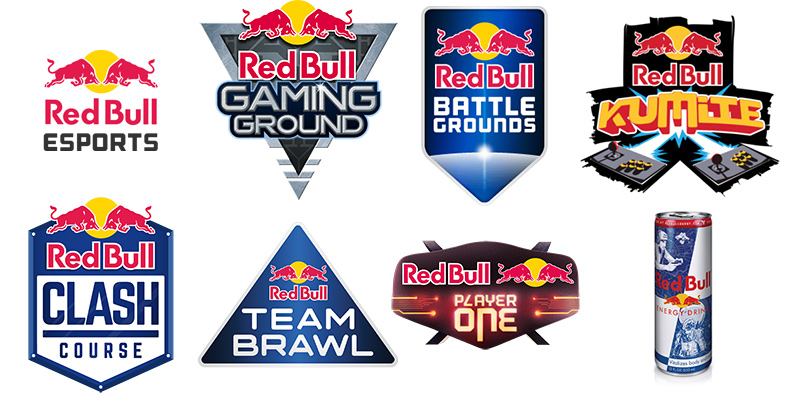
An example of a non-endemic brand which has invested in e-sports branding to the point that they have effectively become endemic is Paris Saint-Germain (PSG), a professional French football club. The club established the PSG E-Sports division in 2016 and began by investing in e-sports through the FIFA video game leagues. Over the years PSG has extended it’s wholehearted investment into other e-sports titles, with it’s most notable partnership being struck with the elite Chinese Dota 2 team known as LGD in 2018. The rebranded PSG.LGD team then went on to win a USD $4,085,148 prize at The International 2018 – the biggest e-sports competition in the world. Moreover, PSG recently expanded into Southeast Asia by launching an Indonesian professional Mobile Legends : Bang Bang team formed in partnership with an Indonesian-based e-sports organization, Rex Regum Qeon.
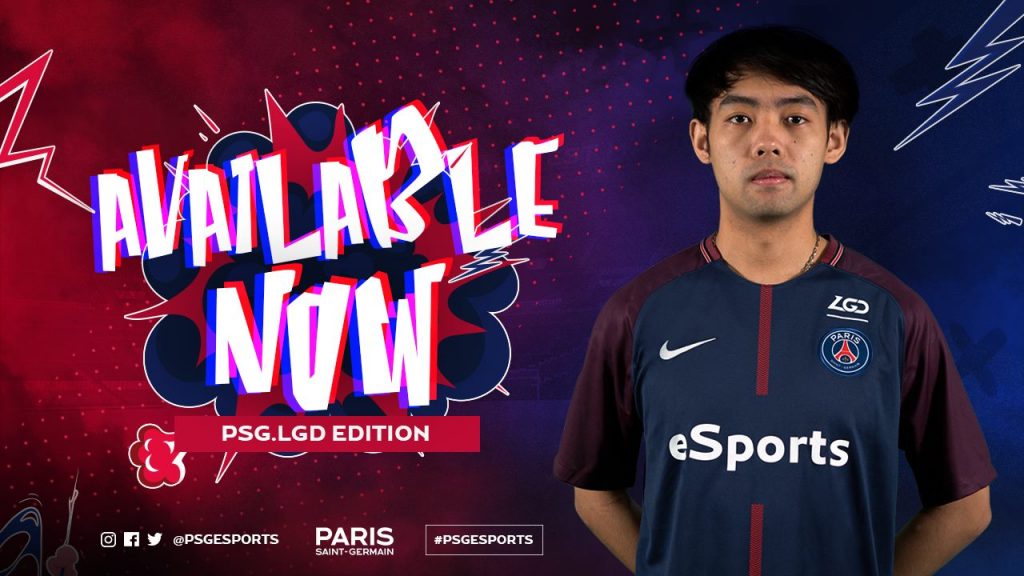
Last year, Louis Vuitton stepped into the e-sports industry by collaborating with League of Legends. They released a fashion line for both in-game assets and a physical clothing collection. The collection named LVxLOL was designed by Nicolas Ghesquiere. It was a first of its kind partnership that was unexpected but fascinating. However, before this Louis Vuitton had also expressed its interest in the gaming industry when they partnered with Square Enix to feature the female lead of Final Fantasy XIII, Lightning, in an advertising campaign for its spring and summer collection. The formation of the partnership illustrates that a target market of wealthy consumers who would be interested in this collaboration exists within the realm of e-sports.
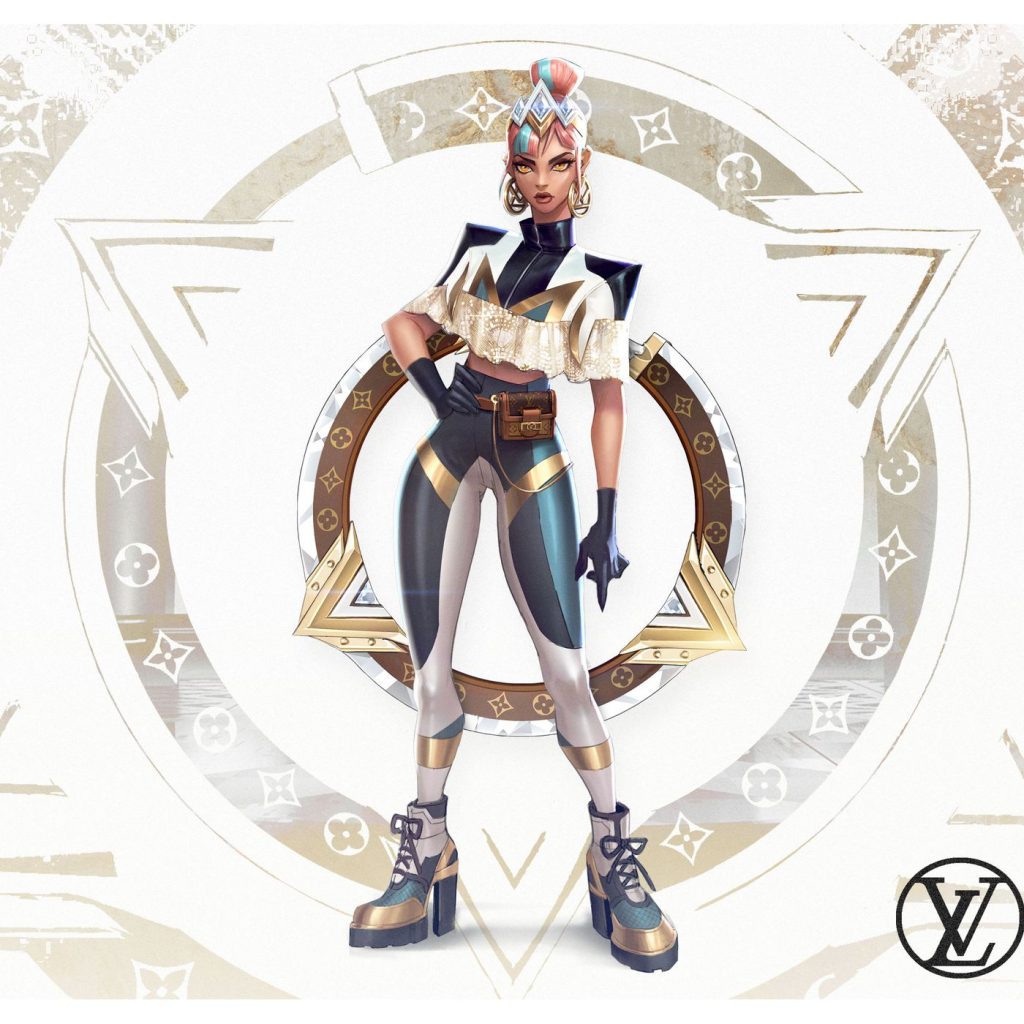
Why Should E-Sports Matter to Non-Endemic Brands?
According to Steve Borenstein, the Chairman of Activision Blizzard’s E-Sport Division, e-sports has the potential to rival the biggest traditional sports leagues in terms of future opportunities. The industry revenue is expected to grow 10% annually. Furthermore there is a promising future growth opportunities in terms of advertising, licensing, ticket sales, sponsorships, and merchandising.
The gaming ecosystems offer a large consumer demographic data for brands to develop effective marketing strategies. Some brands reportedly believe that while the number of audience is large, the viewers may not be the right audience for their brands. This however is a mere stereotype that gamers are mostly young adults or students. In reality, Millennials who have increasing income are very active participants in the gaming industry too, providing an ideal consumer market for brands across industries. And contrary to popular belief, gaming is no longer just a male demographic past-time – female gamers are on a rise, and now account for almost half the gamers out there, driving the overall growth of the industry at speed.
There are approximately 20.1 million gamers in Malaysia all of whom spent a total of US$673 million on games in 2019. This makes Malaysia one of the biggest game market in Southeast Asia in terms of revenue. Moreover, around 61% of Malaysian’s urban online population tend to watch videos related to gaming regularly.
E-Sports provides unique ways to enhance the targeted demographics’ perception of the company brand. E-Sports leagues attract professional teams, players, franchises, and brand names alike. Branding opportunities come in the form of investments in leagues and events or sponsorship for jersey and equipment. These investments allow consumers to associate the brand with e-sports. Connecting the brand with e-sports inadvertently connects the brand with the fans of the game. Through this brands are able to build on personalities similar to traditional sports.
The industry is largely focused on digital platforms hence digital marketing plans represent the most popular form of marketing. With the rise of passionate e-sports fans, brands are able to engage with these ‘always-on’ consumers through improved integrated advertising. Brands are also able to integrate their global marketing efforts with trending leagues or competitions such as games like Overwatch and League of Legends. Facebook is an excellent example of how a major social platform utilizes the opportunities of e-sports branding when they purchased exclusive rights to broadcast an e-sports event known as Heroes of the Dorm, which went hand in hand with their efforts to promote their gaming livestream division, “Facebook Gaming” through the “level-up program” which gives gaming streamers the ability to promote themselves on Facebook and earn money from viewer contributions.
E-Sports is an emerging industry with long staying power and a well-developed talent pool. Many experts predict a steady upwards trend in global e-sports revenue. In 2016 the e-sports revenue reached $800 million, and in 2019 it was estimated at $1.2 billion. It is projected to grow up to $2.3 billion in 2022. Furthermore, global viewership is also expected to increase by 12% on a yearly basis. The viewership rose from 214 million to over 303 million in 2019.
In recent times, the COVID-19 pandemic has indirectly bolstered the gaming industry, with Malaysians registering increases in playing online gaming these past few months during the Movement Control Order (MCO)/ RMCO periods. Out of which, an overwhelming majority are gaming on their mobile phones.

Some of the key online games Malaysians are playing these days include FIFA, Player’s Unknown Battlegrounds (PUBG) Mobile, DOTA 2 and so on. One interesting distinction is PUBG Mobile and PUBG PC is that they are two different games altogether – whilst PUBG Mobile is owned by Tencent, the PC version is under Bluehole, a South Korean organisation – of which Tencent owns some stake in too.
And as things goes, even though PUBG PC was first launched in 2017 and PUBG Mobile in 2018 – it’s the latter version that has proven to be the more popular one to date.

Before getting involved in e-sports branding, it would be good to first familiarize yourself with the ecosystem and the jargon that exists within this world – gamers are essentially a different segment of consumers altogether and should be treated as such if brands wish to target them.
Malaysian Brands and the Local E-Sports Scene
Several non-endemic brands that have dabbled into the local e-sports industry include FAVE, Boost, Digi, DHL, Domino’s Pizza and Watsons/Badlab. There is a notable trend of telecommunications companies trying to make their way into e-sports despite them still being non-endemic brands as they do not directly produce any of the games or products that are featured in actual e-sports tournaments. E-wallet services such as FAVE and Boost are also examples of non-endemic brands that are focusing heavily on e-sports due to the possibilities that are available through the integration of e-wallets and e-sports on digital platforms.
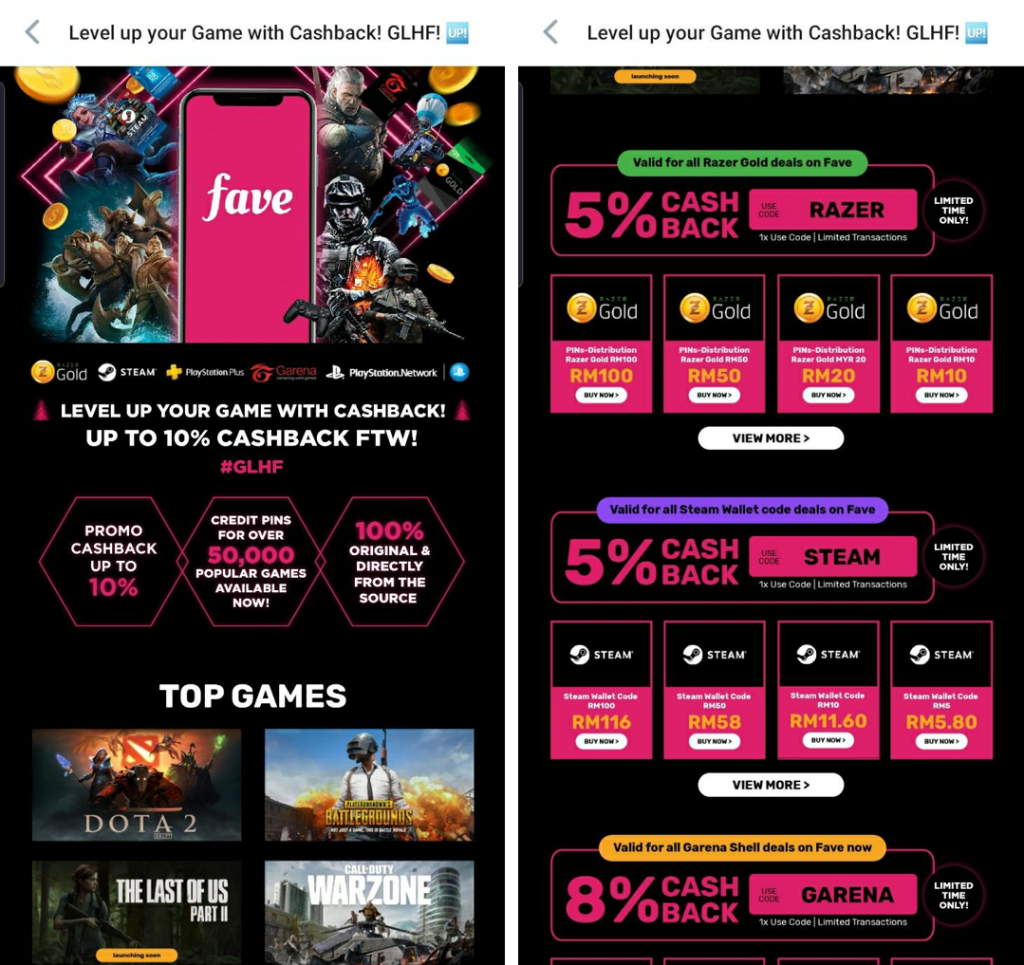 Last year, Watsons Malaysia and Bad Lab collaborated to launch an e-sports tournament named The BAD Duel. Bad Lab is a brand of personal care products that is known for its unorthodox brand image and innovative products that distinguish itself from itsit’s competitors in the industry. As such, despite being a non-endemic brand, Bad Lab has been able to utilize e-sports branding to it’s advantage, using the appeal of e-sports to reinforce it’s brand image as one that appeals to younger audiences. This strategy of a non-endemic brand utilizing e-sports events to engage with audiences and express a youthful brand image has most famously been employed by the energy drink company Red Bull, to the point that it’s name and branding has almost become synonymous with e-sports within the industry – demonstrating the potential of e-sports branding for non-endemic brands. Hoping to capitalize on this, Watsons and Bad Lab hosted the first BAD duel event at Sunway Velocity Vanity Atrium, which featured Tekken 7 and Dota 2 as it’s tournament games. After the success of the first BAD duel event, Watson and Bad Lab continued their collaboration to host another e-sports tournament in spite of the difficulties presented by the COVID-19 pandemic. In fact, Bad Lab and Watsons took advantage of the possibilities of e-sports by opting for an online tournament for PUBG Mobile, allowing participants and audiences to engage with their brands remotely.
Last year, Watsons Malaysia and Bad Lab collaborated to launch an e-sports tournament named The BAD Duel. Bad Lab is a brand of personal care products that is known for its unorthodox brand image and innovative products that distinguish itself from itsit’s competitors in the industry. As such, despite being a non-endemic brand, Bad Lab has been able to utilize e-sports branding to it’s advantage, using the appeal of e-sports to reinforce it’s brand image as one that appeals to younger audiences. This strategy of a non-endemic brand utilizing e-sports events to engage with audiences and express a youthful brand image has most famously been employed by the energy drink company Red Bull, to the point that it’s name and branding has almost become synonymous with e-sports within the industry – demonstrating the potential of e-sports branding for non-endemic brands. Hoping to capitalize on this, Watsons and Bad Lab hosted the first BAD duel event at Sunway Velocity Vanity Atrium, which featured Tekken 7 and Dota 2 as it’s tournament games. After the success of the first BAD duel event, Watson and Bad Lab continued their collaboration to host another e-sports tournament in spite of the difficulties presented by the COVID-19 pandemic. In fact, Bad Lab and Watsons took advantage of the possibilities of e-sports by opting for an online tournament for PUBG Mobile, allowing participants and audiences to engage with their brands remotely.

DHL, the official logistics partner of ESL is working to unite gamers around the world through the ‘Gamers Unite Competition’. The competition invites gamers to sign up and share the story of the online friendships they formed for a chance to win an exclusive VIP package to an ESL One Dota2 event. Although DHL isn’t directly involved with the hosting of an e-sports tournament in this case, this serves as another example of how non-endemic brands can take advantage of e-sports branding to create engagement without having to invest the large amount of resources it would take to host an e-sports tournament.
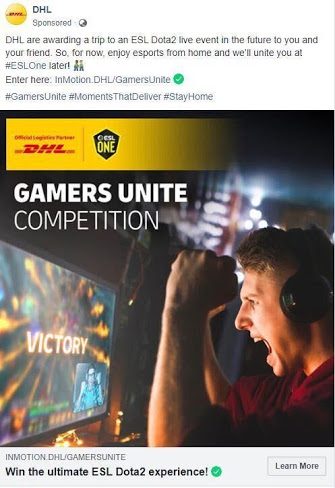
More and more consumer brands are recognizing the importance of entering the e-sports space. Non-endemic brands can greatly benefit from the opportunities and growth that e-sports branding provides and this will in turn enhance and extend their brand perceptions. Furthermore, e-sports events and activities carry an extra advantage in the new era of social distancing as they allow consumers and audiences to participate remotely, opening up new avenues for brands that previously relied on face-to-face strategies for audience engagement.
With everything taken into consideration, the time is ripe to explore the potential of e-sports branding for your company as the industry continues to become even stronger and more prevalent in Malaysia and around the world. If you would get additional insights and learn how your company could utilize e-sports branding to the fullest, feel free to contact us at: theteam@oppotus.com
#glhf
(Featured Image: Monster Energy)
This article was updated on the 3rd of May 2023

